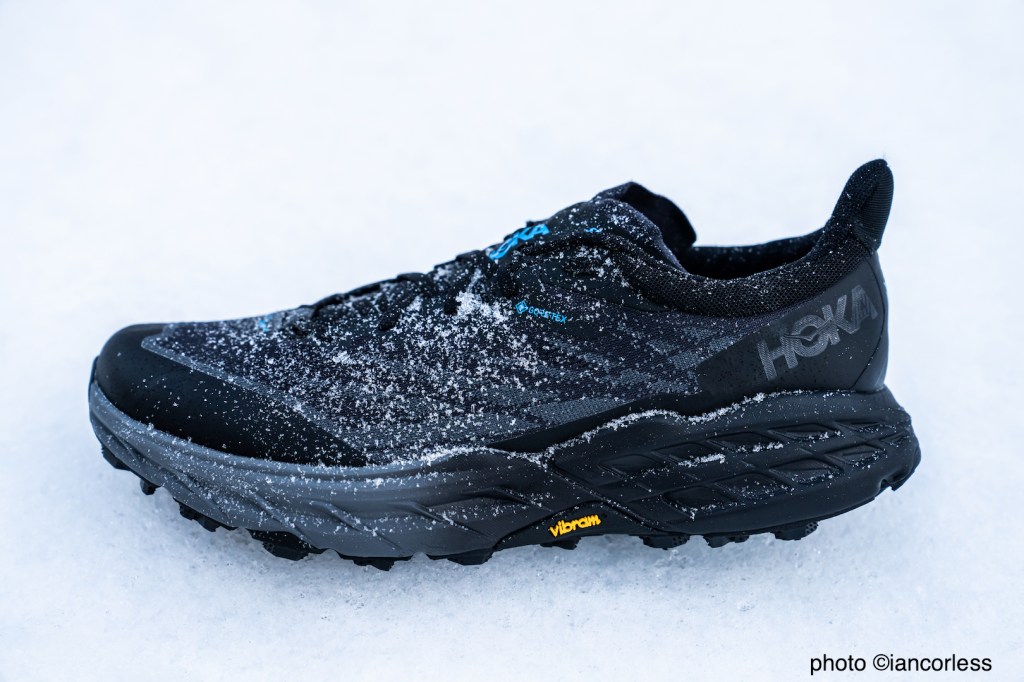
Hoka Speedgoat and the ‘5’ incarnation is arguably one of, if not THE most popular trail running shoe ever. No matter what race, what conditions, you will see countless Speedgoat shoes.
With maximal cushioning, great fitting upper, the option of different widths and an excellent Vibram outsole, it’s easy to understand why they are so popular, especially in the ultra world!
For me personally, I find the stack height just too high, especially on technical and challenging terrain; the risk of an ankle roll is too high! However, on single-track, the benefits are there if cushioning is your thing? For me, give me a Zinal or Torrent 2!
Living in Norway, once November arrives (sometimes earlier), pretty much all my runs require a specific winter shoe that has studs to maximise grip on ice. Until a few years ago, the choice was limited with unsurprisingly, Scandinavian companies such as VJ Sport and Icebug leading the way.
Now though, options from Asics, La Sportiva, Salomon, Salming, inov-8 and others are available, it only shows how the growth of running is booming and how the ‘need’ to run all-year makes it worthwhile for brands to produce a very specific shoe, that by its nature, has a limited market.
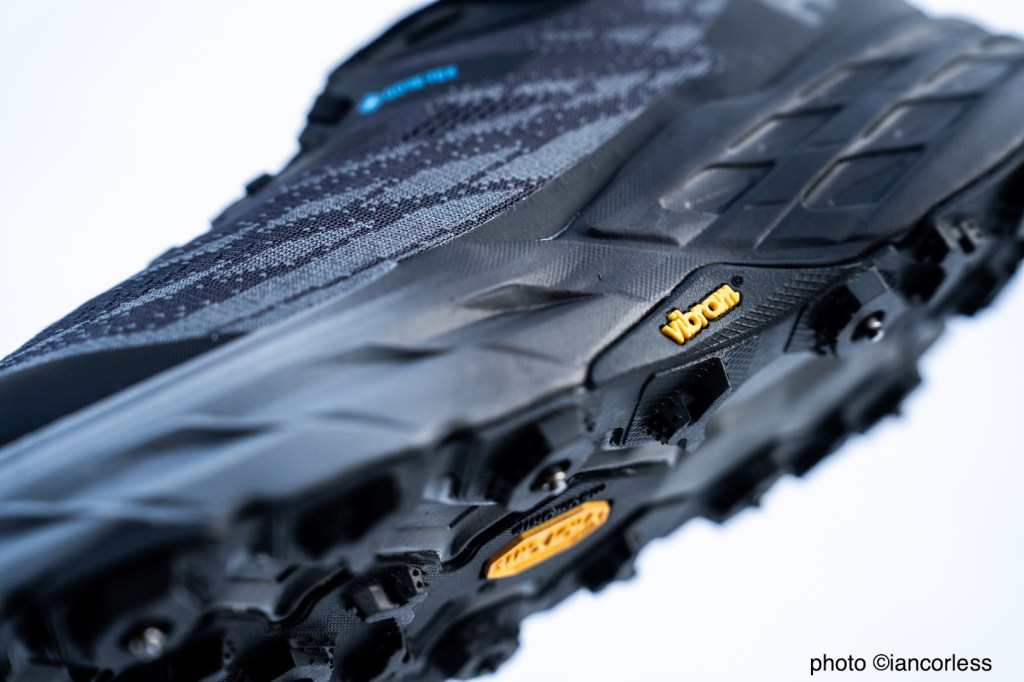
Therefore, the addition of a Hoka Speedgoat 5 with spikes is a welcome addition to the market. Certainly, adapting the Speedgoat makes sense, it is Hoka’s most popular trail shoe, so, it will certainly be popular in this version for those who need a specific shoe.
To my knowledge, this version of the Hoka is the *first (?) maximal cushioned shoe with winter spikes on the market, this alone will fill a hole in the market. It’s a welcome addition.
WINTER RUNNING
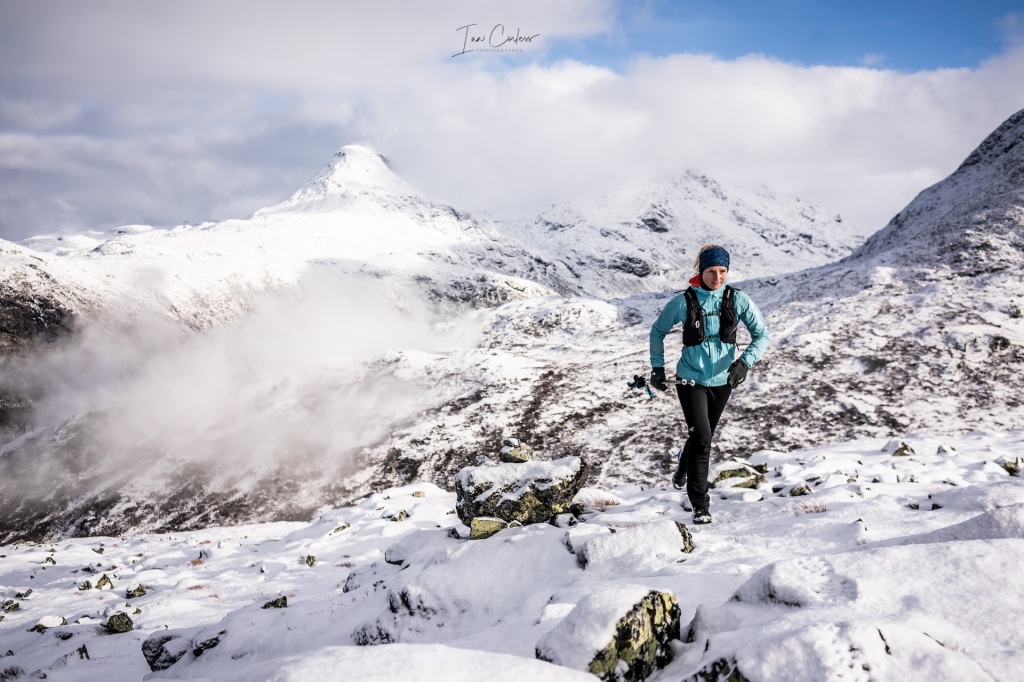
I have written many articles on winter running, read HERE. However, for clarity, I will provide a quick summary.
Not all winter running is the same and most certainly, conditions vary considerably.
- Icy roads and pavement – A spiked shoe with cushioning is perfect. The outsole can be less aggressive.
- Icy trails – A spiked shoe with an aggressive outsole is best.
- Snow and Ice – A shoe that is used for icy trails works, however, sometimes the addition of Gore-Tex is welcome and in deeper snow, a boot that comes higher over the ankle is recommended.
- Snow/ Ice in mountain terrain – We now crossover into alpinism and a more specific shoe is required and depending on conditions, a more specific crampon. This can be a light micro-crampon such as Nortec or a specific mountain crampon.
Needless to say, the Hoka falls in to categories 1 and 2 and depending on conditions, may be applicable for point 3. It is most definitely not a point 4 shoe.
In theory, when you run on ice, your run gait should not change, but it does. For the spikes to work you firstly, need to trust that they will do the job! Secondly, you need as many spikes as possible in the ice to provide grip. So, when running on the flat, you are looking to land mid-foot as much as possible, so, all those spikes, 12 in this case, can grip. Going uphill you will use the front of the shoe, the Hoka has 8 spikes. Downhill you will use the rear (4 on the Hoka) but if very slippery, you may well find that you try to land with a flat foot. Being ‘light’ on your feet is not a benefit on ice, you need to strike the ground, stick those spikes in and then move on; this is often why ice running is more tiring.
IN USE
Road
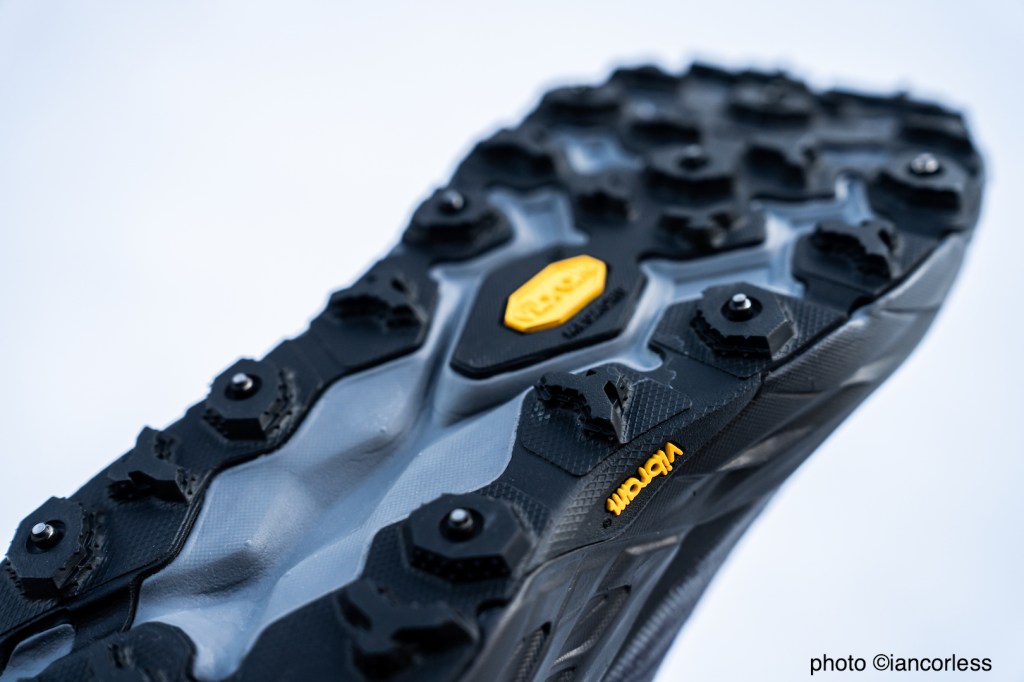
With the above clarified in regard to usage, for me personally, I found the Speedgoat working really well on hard road and trails. The cushioning is welcome; ice running is always hard on the body. There is a great feel for the conditions, bounce and the propulsive phase is very good and the 12 tungsten carbide spikes work exceptionally well. The placement with 4 at the rear and 8 at the front. Notably, 2 are at the very front, perfect when going uphill! Importantly, ice defrosts and often you can find sections with no ice and just road and/ or trail. Many spiked shoes can feel harsh here, but the Speedgoat works well due to the additional cushioning.
Trail
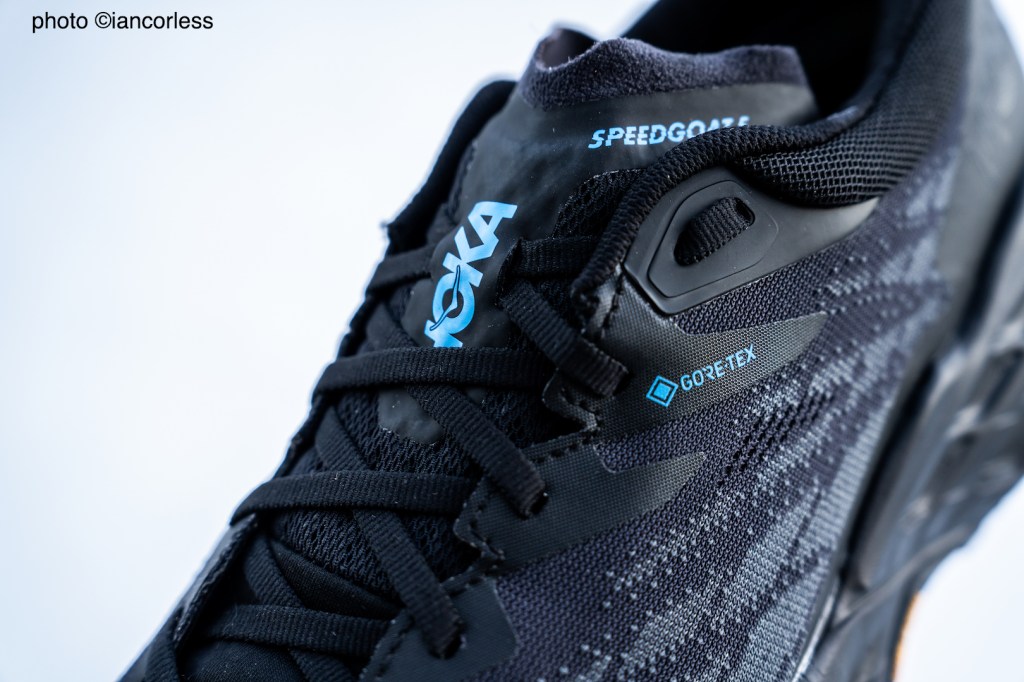
On some and groomed trail with ice, the feelings and sensations are the same as road. Great feel, good cushioning, and solid grip.
On technical trails, rocks, roots, hard and rutted ice, I find the stack height too high and the shoe becomes unstable. I found myself rolling left or right and for me, it’s a potential ankle sprain waiting to happen.
Snow
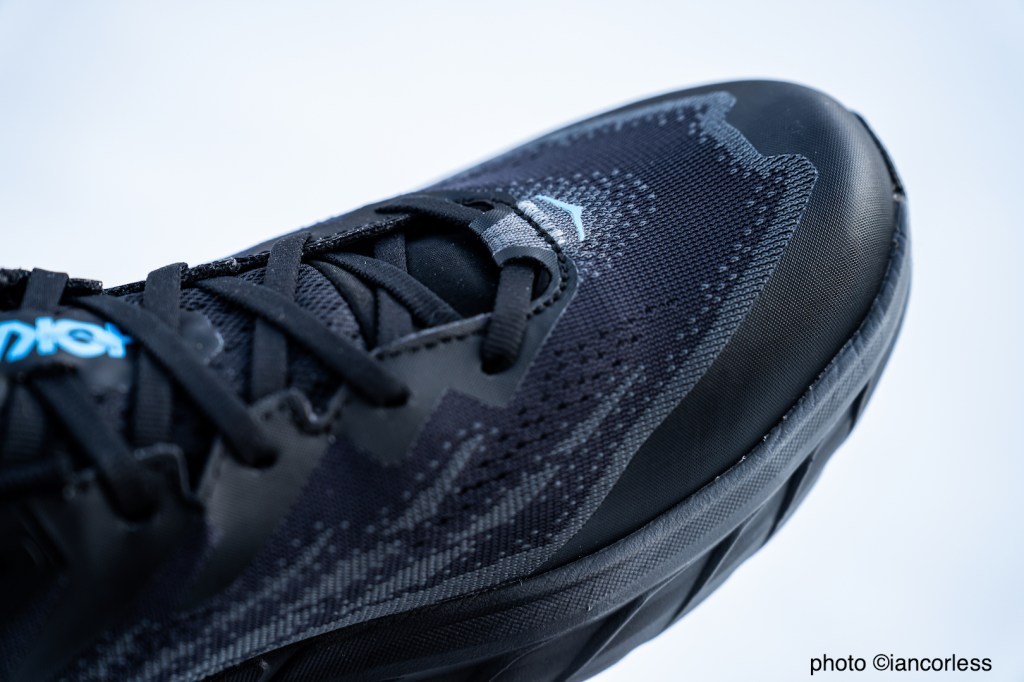
In soft-snow with ice underneath, they work well, but, a lower cushioned shoe works better. After all, the snow cushions anyway, so, the extra shoe cushioning is not required. Once through the snow, the grip is good. It can be hit and miss though, but that is down to conditions and not the shoe. Ultimately, once the snow is deeper, the need for a more aggressive crampon or micro-crampon will be required, and then, you are looking at another shoe.
In very soft-snow I would be using a boot with spikes or the addition of a crampon/ micro-crampon.
THE SHOE
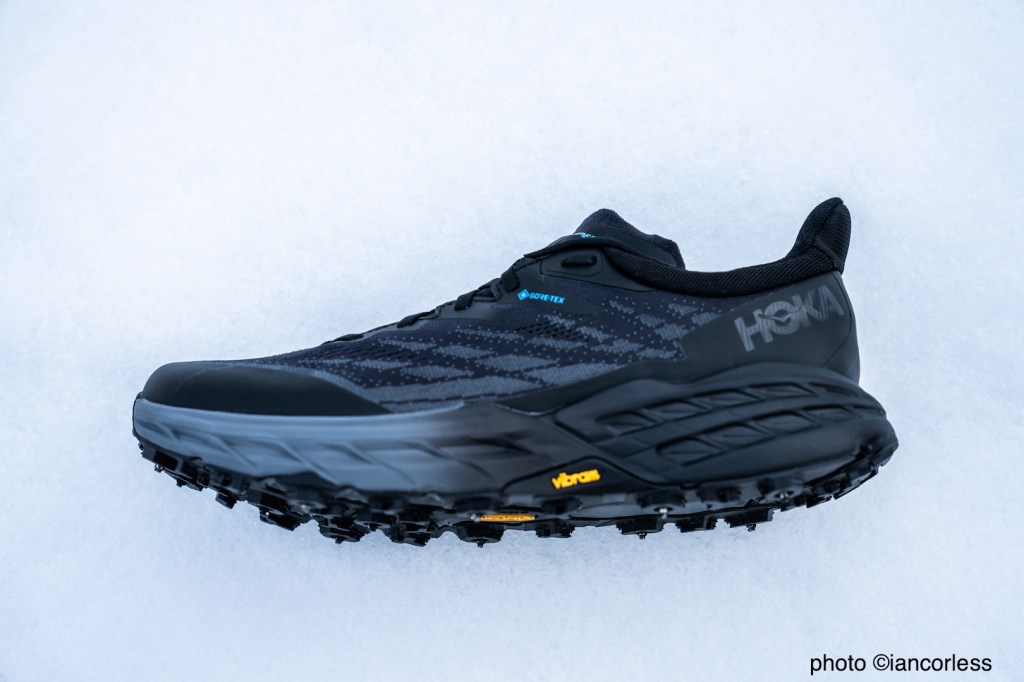
A neutral shoe with a balanced feel and 4mm drop, the Speedgoat 5 is a great feeling shoe, albeit, a little on the heavier side – particularly for a Hoka. Listed weight is 349g.
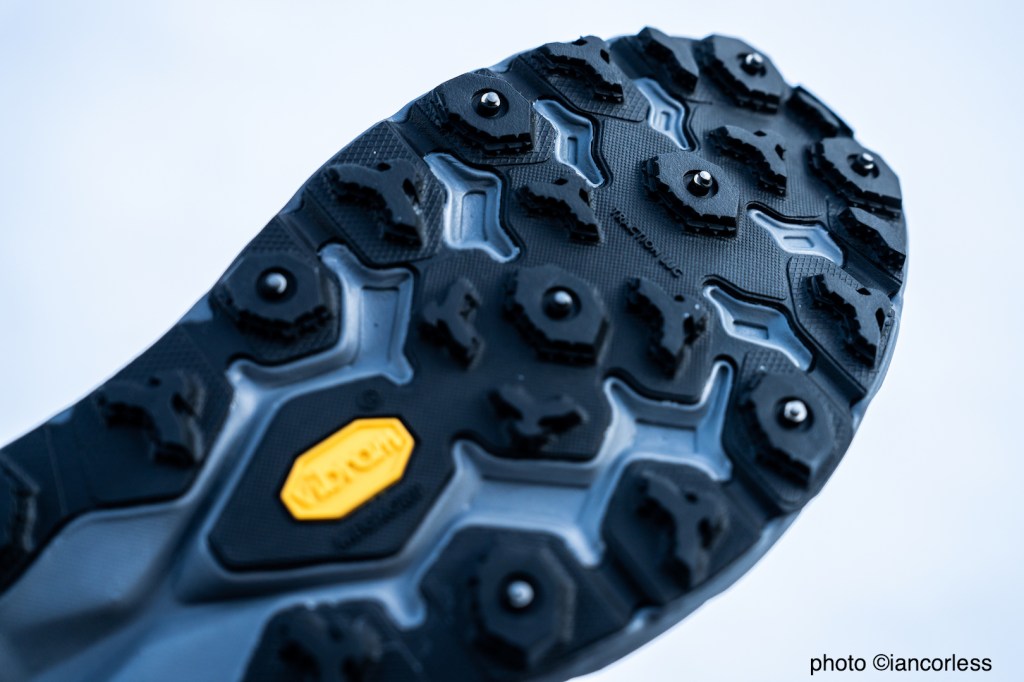
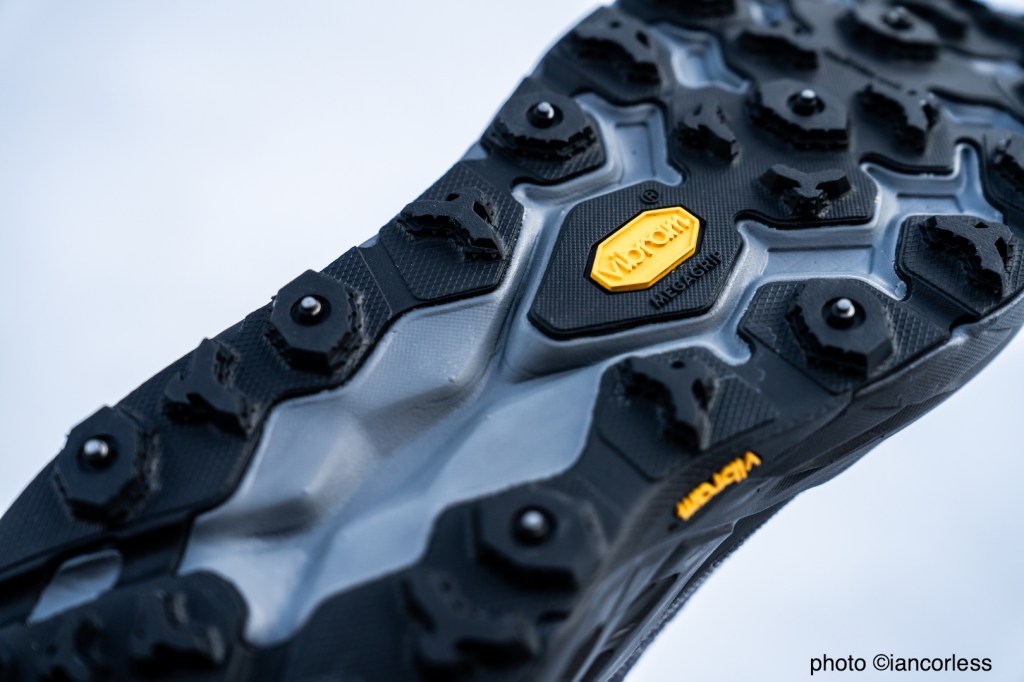
This incarnation is basically a Speedgoat 5 GTX with the addition of 12 tungsten carbide spikes to provide grip in wintry conditions, particularly ice. The spikes are set with 5mm lugs of Vbram MegaGrip.
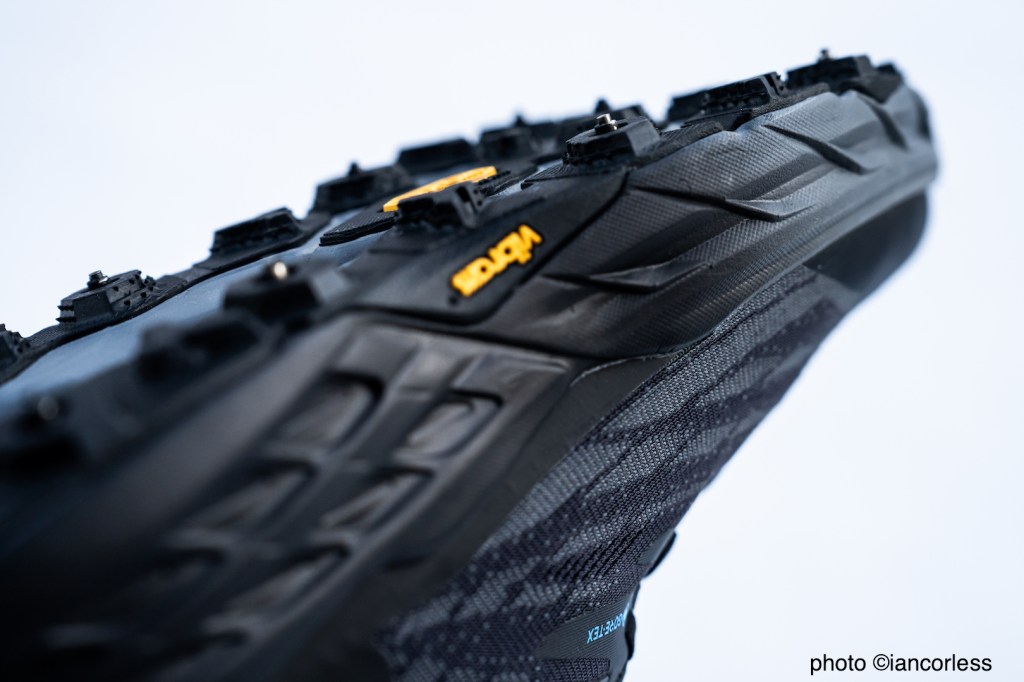
An EVA midsole, sock-liner fit, rubber toe protection and Gore-Tex mesh upper; this shoe is most definitely one to look at if you are in need of a specific winter shoe with extra cushioning.
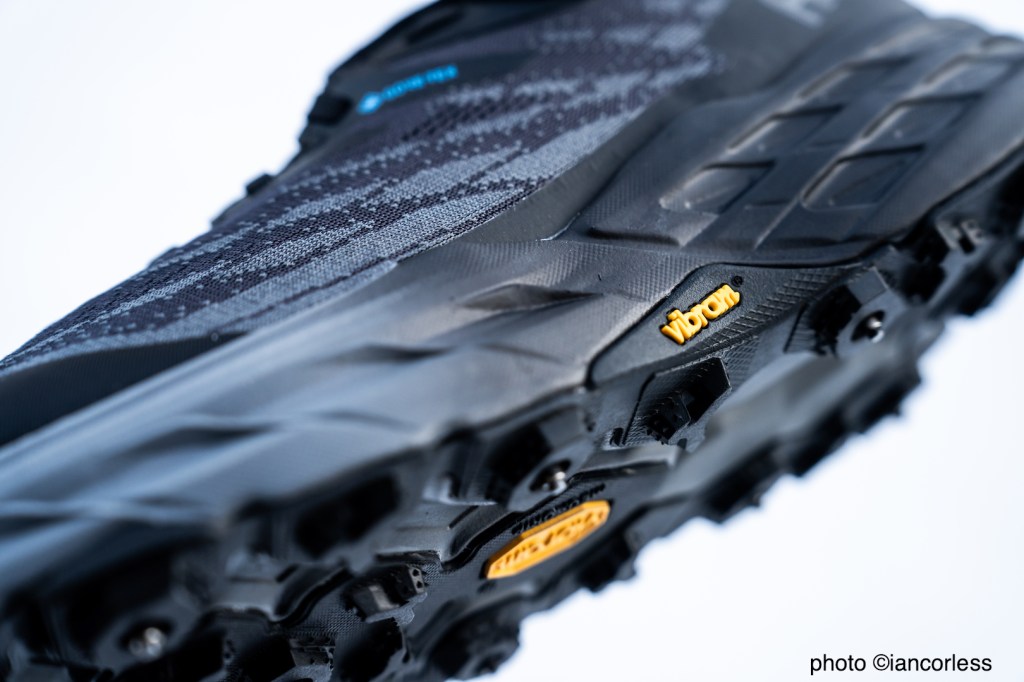
Listed as a trail shoe (which of course it is,) it works exceptionally well on the road too. This shoe is all about providing grip on ice, so, it makes no difference if that ice is on road or trail.
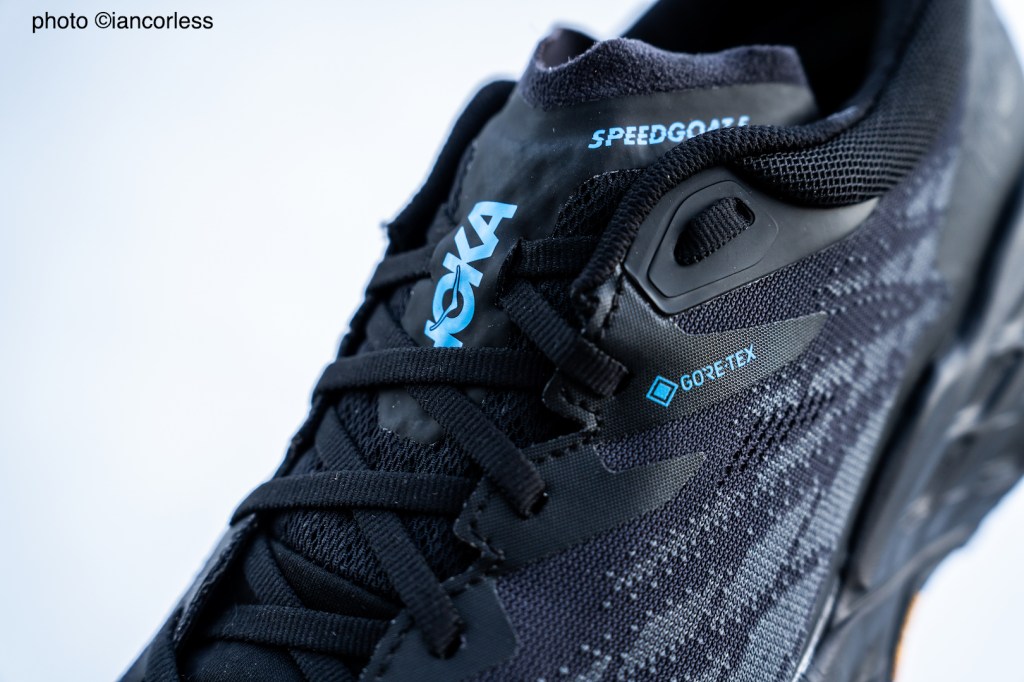
The Gore-Tex upper will of course cause debate, some hate Gore-Tex in a shoe, others love it. Ultimately it works really well if one is considerate of conditions and one uses common sense. Quite simply, use a merino sock when wearing the shoe, this makes a huge difference. Accept that Gore-Tex will only keep feet warm and dry IF you do not go in anything that is deeper than the shoe… Once you are in anything that reaches the ankle, be that snow or water, it can enter the top of the shoe and therefore impact on the foot inside the shoe. If conditions are like this, you probably need to move a run boot (such as the La Sportiva Cyklon Cross GTX) or think about using a shoe without Gore-Tex. Merino socks are a must though, they retain warmth, even when wet. I have used the Speedgoat 5 in a Norwegian winter, temperatures have reached -20 and ice levels have been high. The Gore-Tex has worked perfectly in keeping my feet warm, especially when wind-chill has been high. The Gore-Tex supplies a combination of waterproofing and breathability, it’s hard to stay perfectly dry, but water does stay on the outside. Perspiration can and does escape from the inside; keeping sweat to a minimum, but that is where merino socks step in. When fresh soft-snow came, I used different shoes so as to ensure I had maximum protection from the elements.


The additional cushioning (29mm/33mm) and bounce has been welcome on harder trails but on technical trails, less so, the risk of ankle roll is too high (for me.) They do keep feet comfortable and supported, maybe even more than the other Speedgoat models. Propulsion is also good through the run gait.
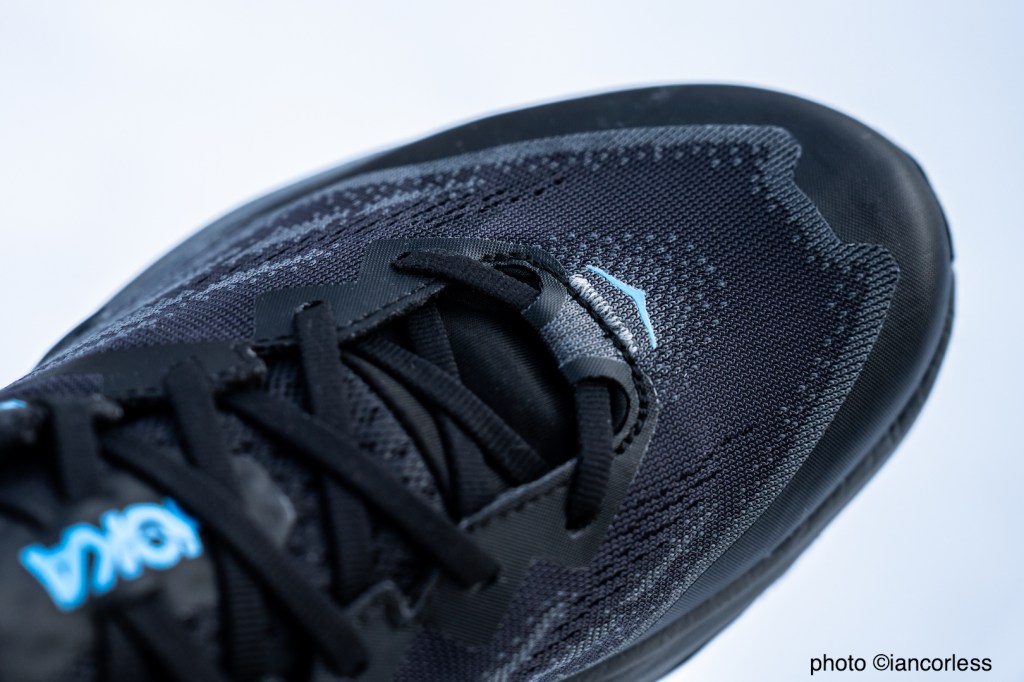
The wider platform is a hugh benefit in snow and ice as is a wider toe box. The more outsole on the ground, the better the grip. Talking of grip, the spikes are held in Vibram MegaGrip which is tried and tested.
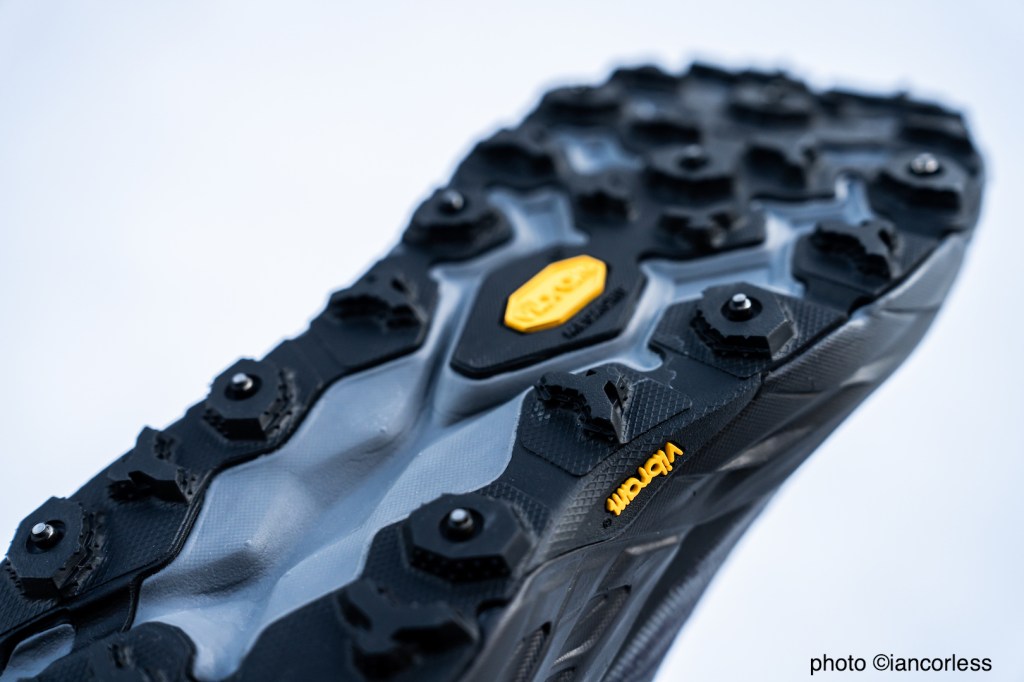
It has excellent rubber compound, 5mm logs with zonal multi-directional rubber placement, so, when you need the shoe to hold on, they do. Obviously, the 12 tungsten carbide spikes add the icing on the outsole and even when there is no ice, these spikes offer stunning grip on trail – ask any orienteer!
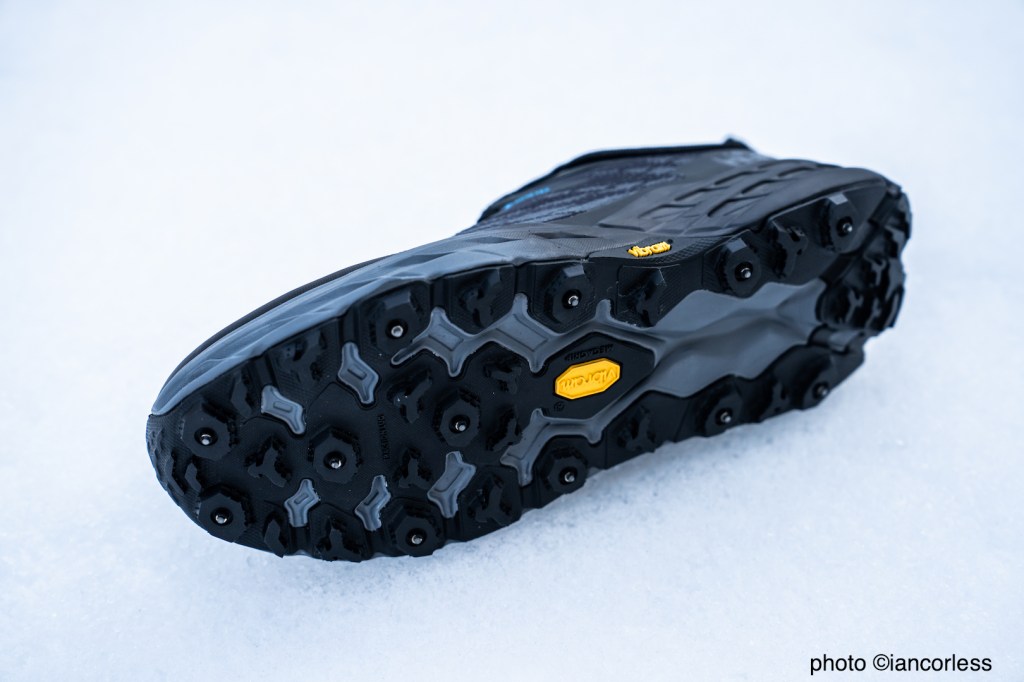
Everything about the Hoka works really well, they are comfortable, spacious, great foot-hold, medium heel hold and toe protection is superb.
CONCLUSION
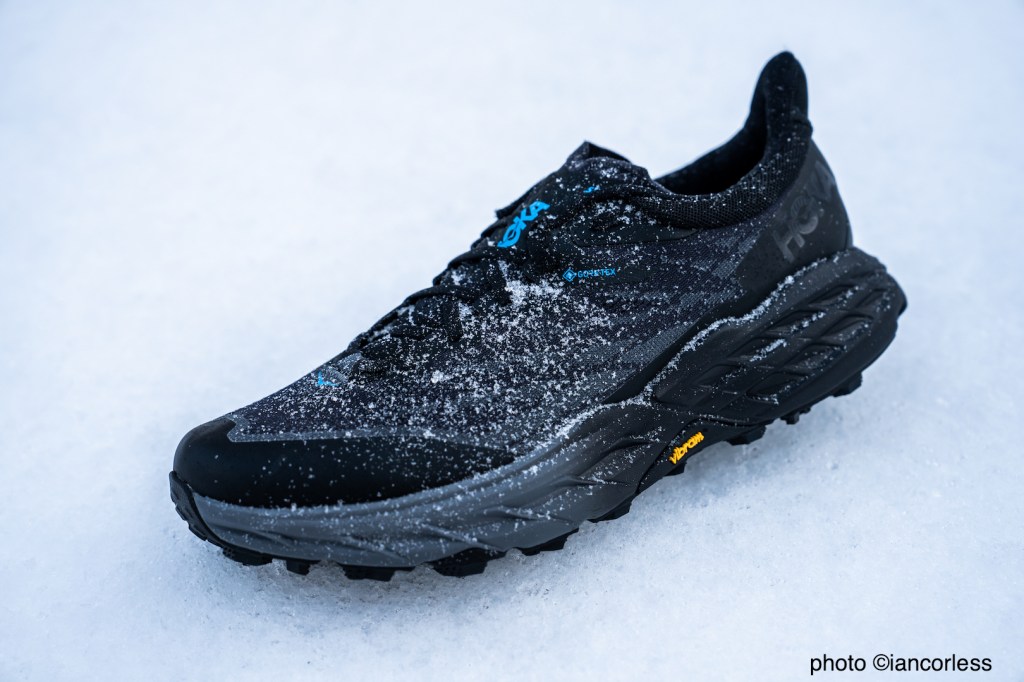
Winter shoes are very specific and if you only run on ice a few times a year, the additional expense is probably not worth it. Get some micro-crampons and use them on your favourite trail shoes.
However, if like me, pretty much every run for weeks and months involves ice, a specific spiked shoe is a must. The feel for the ground is so much better than any ‘add-on.’ Usual caveats as in points above, 3 and 4 need consideration.
The Hoka Speedgoat 5 GTX with spikes brings something new to the market, I have many spiked shoes, this one is the first with ‘more’ cushioning. For many, it will be a god send! The shoe performs great, and if you are already a Hoka user, you will love the Speedgoat.
For me though, this shoe has it’s place and uses, I have enjoyed road runs with ice, I have enjoyed non-technical trail runs with ice BUT anything technical and/ or with additional snow, I have used another shoe. It’s a me thing!
The Speedgoat 5 GTX with spikes is ideal for any runner looking for a robust, winter trail running shoe with comfort. They have great grip on frozen terrain and come recommended.
*As a footnote, I have become aware of the Icebug Arcus which may well be worth consideration if cushioning is your thing. And, this shoe has 13 studs.
My recommendations? The Asics Gel Fujisetsu 3 G-TX is still the shoe to beat for ice and winter running. The La Sportiva Blizzard GTX (think point 3 above) is an amazing winter boot with studs and when conditions need something more, the La Sportiva Cyklon Cross GTX or Scarpa Ribelle Run Kalibra G are perfect for snow and adding a micro-crampon.
Follow on:
Instagram – @iancorlessphotography
Twitter – @talkultra
facebook.com/iancorlessphotography
Web – www.iancorless.com
Web – www.iancorlessphotography.com
Image sales –www.iancorless.photoshelter.com
